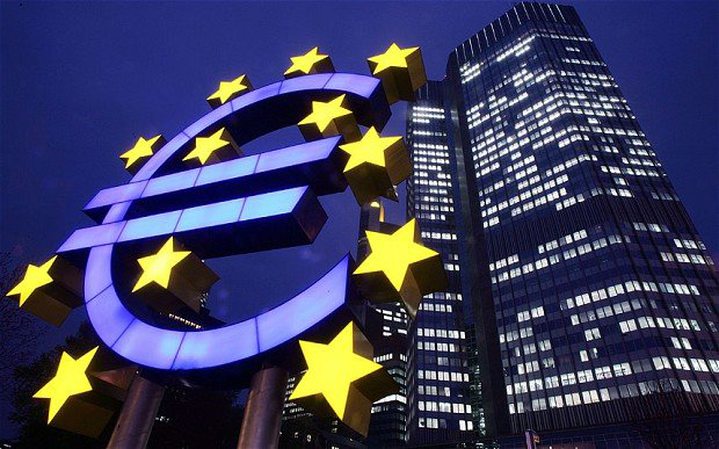Europe’s Bank Takes Aggressive Steps

He is cutting interest rates to the bone. He is charging banks even more to park their money. And he is using the central bank’s financial muscle to spur lending.
But the question is whether the new actions, announced on Thursday, will be enough to fix Europe’s problems. If they don’t, Mr. Draghi doesn’t have many options left.
“It’s a positive step by the E.C.B.,” said Carl B. Weinberg, chief economist of High Frequency Economics in Valhalla, N.Y. But he added, “no matter how you look at it, monetary policy has done all it can.”
Mr. Draghi’s aggressive moves reflect the gloomy, if familiar, state of the European economy. Low inflation and stagnant growth feed on each other in a vicious cycle, making existing debt burdens more onerous and making adjustments between the more prosperous Northern European nations and weaker southern ones more painful. The situation has confounded policy makers and politicians who are now grappling with how to prevent another full-on recession.
To some extent, Mr. Draghi is drawing from a new playbook.
Significantly, the central bank took the first steps toward large-scale asset purchases, a milder version of the so-called quantitative easing that the Federal Reserve has used in recent years to pump money into the United States economy.
Starting next month, the E.C.B. will begin buying asset-backed securities: packages of home loans, business loans or even credit card debt, which banks bundle and sell to investors.
For good measure, the central bank also cut interest rates again.
The rate at which the E.C.B. issues short-term loans to banks fell to 0.05 percent from 0.15 percent. The central bank also increased the fee it imposes on banks to store money at the E.C.B., to 0.2 percent from 0.1 percent. That so-called negative deposit rate, first instituted in June, has already pushed some market interest rates below zero.
The collective goal is to kick-start lending. In effect, the central bank will pump money into the financial system using the asset purchases, then charge banks if they park the money rather than put it to more productive use like loans to businesses or consumers.
The moves appeased the market, at least at the outset. Stock and bond prices rose on Thursday. The euro fell sharply against the dollar, a boon for European exporters, since it makes their cars, wine and other goods cheaper abroad. And economists generally welcomed the moves as a sign that the central bank was pulling out all the stops to prevent the eurozone from slipping back into recession.
But even Mr. Draghi conceded that the measures would be ineffective unless political leaders in the eurozone overcame their gridlock and took concerted action to stimulate the regional economy. “It’s very difficult for us to reach our objective” using monetary policy alone, Mr. Draghi said at a news conference. Referring to political leaders, he said, “Each of us has to do their own jobs.”
As the markets start to digest the E.C.B.’s latest strategy, the initial euphoria might fade.
The details of the bond-buying program were vague. The central bank offered little information about how much money the measures would pump into the economy. Mr. Draghi said that was partly because of the lack of data on how many assets would meet E.C.B. quality standards.
And it was unclear whether the purchases truly would qualify as Fed-style quantitative easing. Mr. Draghi said, in effect, yes and no. The program resembles quantitative easing in that the E.C.B. will purchase assets outright.
But the Fed’s quantitative easing, while including asset-backed securities, was based largely on buying up United States government debt in the form of Treasury bills and bonds. By targeting a narrower pool of assets, the E.C.B. effort will be far more modest, at least at first.
Mr. Draghi said that the central bank’s governing council was ready to take further measures if needed — a clear reference to quantitative easing, or broad-based purchases of government bonds or other assets. “The governing council is unanimous in its commitment to using additional unconventional instruments,” Mr. Draghi said at the news conference.
That statement was undercut somewhat, however, by his subsequent admission that some members of the governing council had opposed the moves announced on Thursday, a sign that they would probably oppose a broader program of asset purchases. The council includes the central bank governors of the 18 countries in the eurozone.
In practice the E.C.B. would find it much more difficult than the Fed to buy government bonds, which would be necessary for full-blown quantitative easing. Government bond purchases would provoke vehement opposition in some European quarters, particularly in Germany, where many people regard such purchases as an abuse of central bank power.
“Such a policy would be at the expense of European taxpayers, who would have to pay for the losses incurred by the E.C.B.,” Hans-Werner Sinn, a prominent economist who is president of the Ifo Institute for Economic Research in Munich, said in a statement on Thursday.
As Mr. Draghi also made clear, the E.C.B.’s efforts won’t be enough unless the eurozone heads of state take more action.
That might presumably include François Hollande, the deeply unpopular president of France, and Matteo Renzi, the promising but largely unproven prime minister of Italy. Mr. Draghi has spoken to both leaders recently, but declined on Thursday to say what they discussed.
There is no quid pro quo, Mr. Draghi insisted, in which the E.C.B. doles out stimulus measures if political leaders force through unpopular changes like fewer restrictions on hiring and firing — the sort of changes many economists say France and Italy, among others, must take. “There isn’t any grand bargain here,” he said.
But there is pressure. Mr. Draghi returned on Thursday to a theme he had raised last month at a Federal Reserve conference in Jackson Hole, Wyo., complaining of the impediments to entrepreneurship that still plague many eurozone countries.
“We can provide as much credit as we want,” he said. “But if the person who plans to use this credit for a new business has to wait eight months before he or she can open this new business, and then she has to pay lots of taxes, this person will not apply for credit.”
Part of any joint action by eurozone leaders would require the backing of Germany and Angela Merkel, its chancellor. And so far the Germans have been reluctant to abandon the philosophy of strict budgetary discipline, often referred to as austerity, that they have preached throughout the financial crisis, and that a growing chorus of critics says is to blame for the eurozone’s inability to resume growth.
The most important effect of the central bank measures might be psychological. Thursday’s moves signaled that at least one European institution is doing all it can to avert the threat of deflation — the pernicious downward spiral of prices that often leads to high unemployment. Annual inflation in the eurozone was 0.3 percent in August, according to an official estimate, worrisomely below the central bank’s target of about 2 percent.
“It’s most important to give businesses, consumers and politicians as well the feeling that we are willing to do something for this recovery,” said Horst Löchel, a professor of economics at the Frankfurt School of Finance and Management. “The mood is very, very important.”





